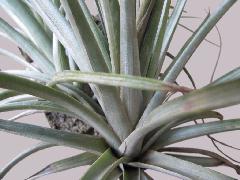
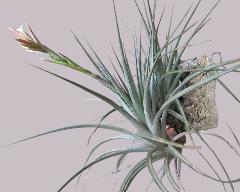
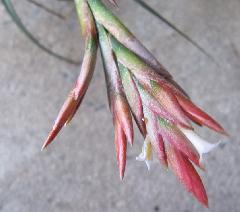
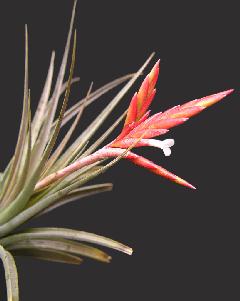
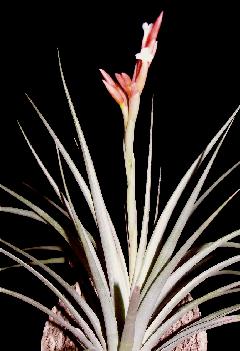
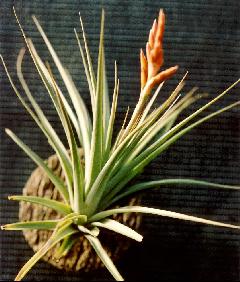
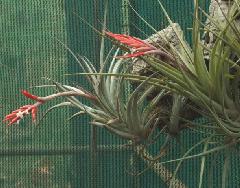
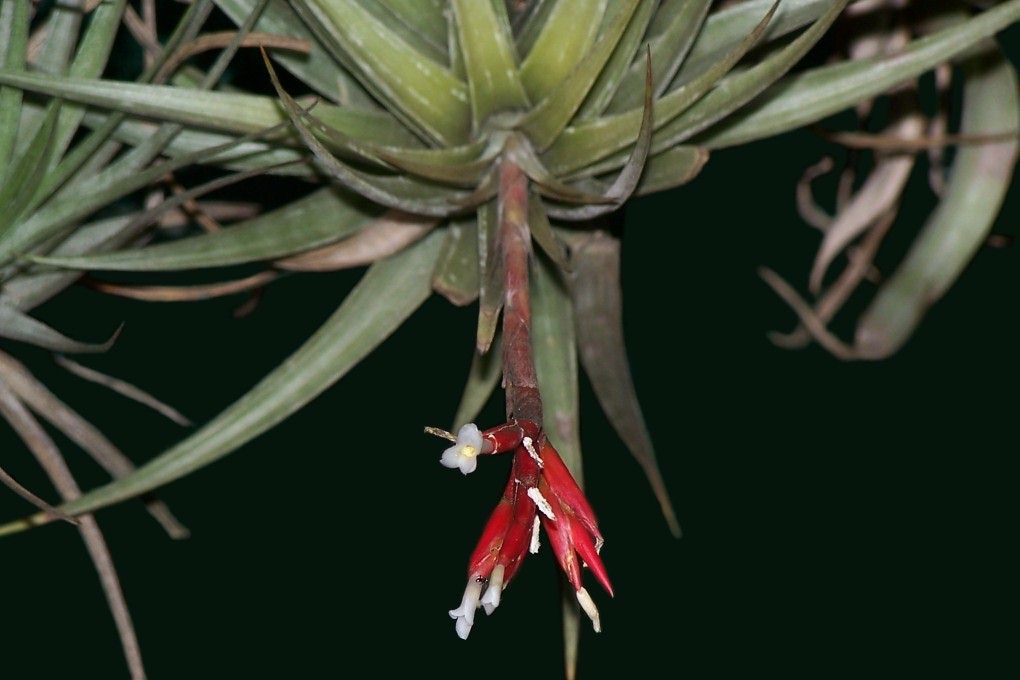
See comments below. |
Reply from Chris Larson...
"There are a lot of forms of vernicosa coming from a wide area of habitat. There are green & grey forms. There are also different reds & oranges in the spikes (to my slightly colour blind eyes). I see no reason to doubt vernicosa."
Len Colgan 2017 ... "There are a number of forms of T. vernicosa, which is spread somewhat widely, especially around Bolivia. They can range from small to large, and can have soft green leaves up to stiff, even brittle, grey leaves. I have attached a couple of pictures of Bolivian forms, one taken by Roberto Vasquez."
Peter Tristram ... "Good to see some forms of the delightful T. vernicosa. I guess Len and Chris saw many types in Bolivia and Argentina and anyone else who's been to habitat of the species. Mine vary from less than 10 cm to over 30 cm in bloom though most are pretty hard leafed."
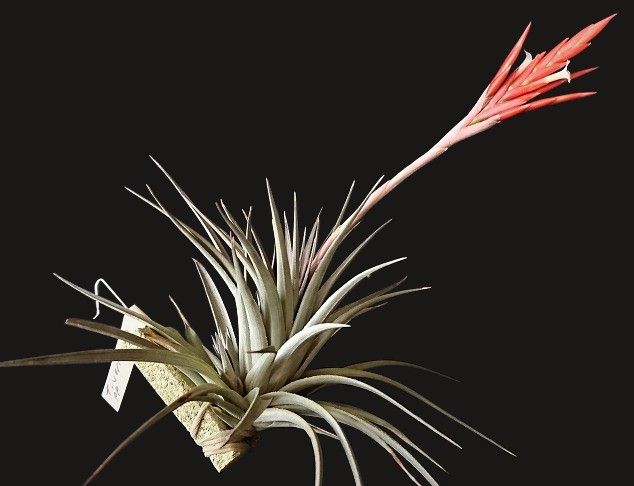
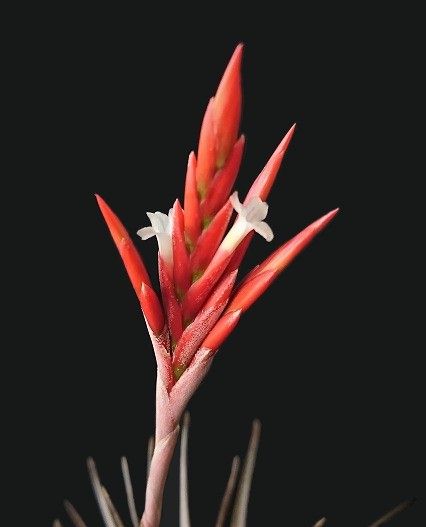
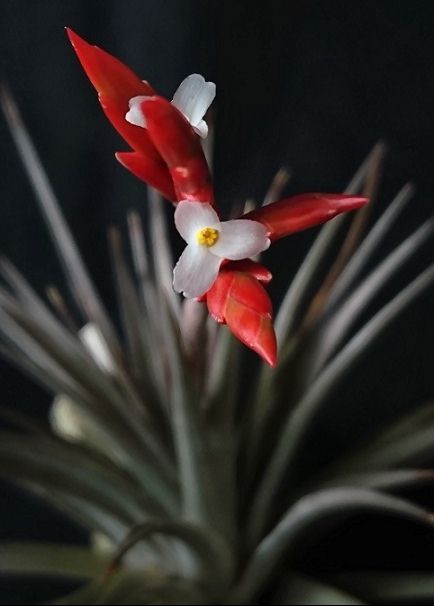
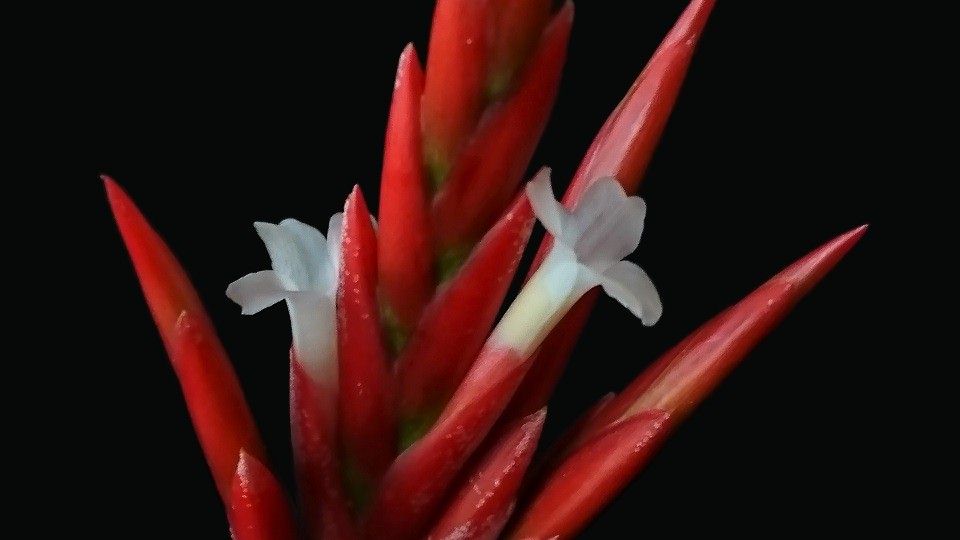
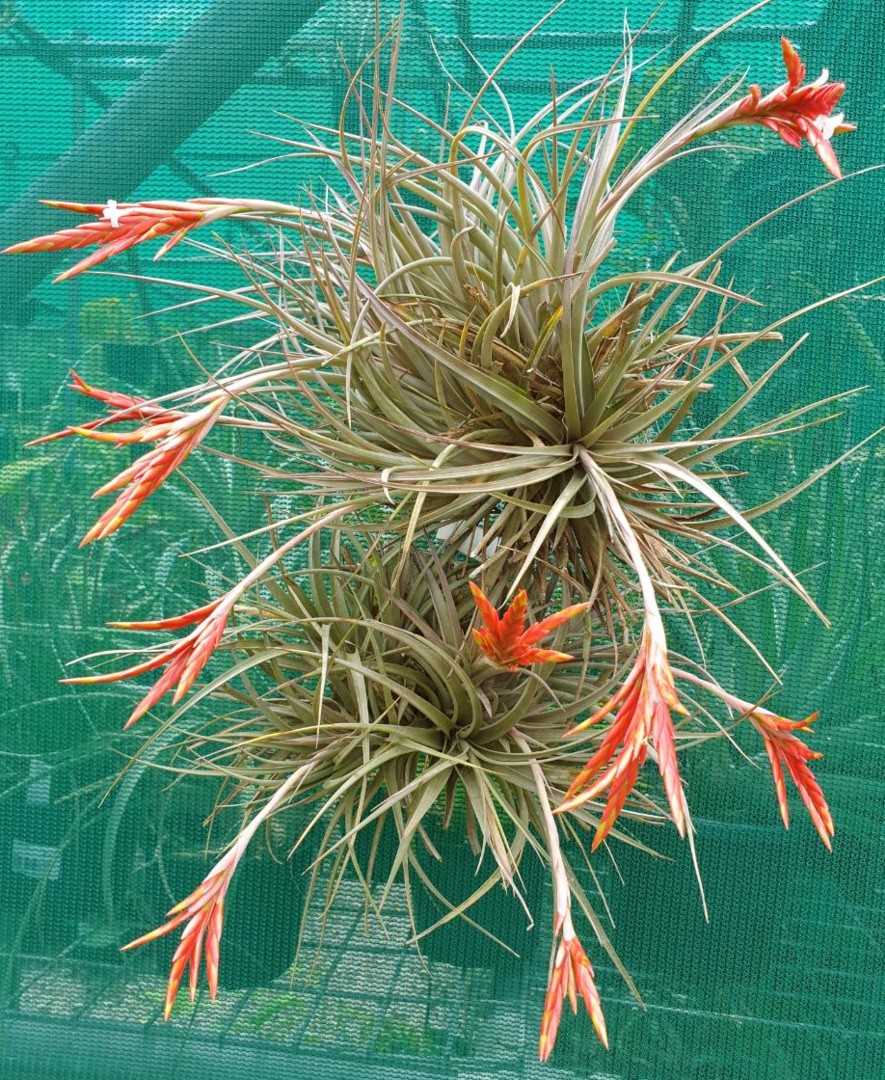
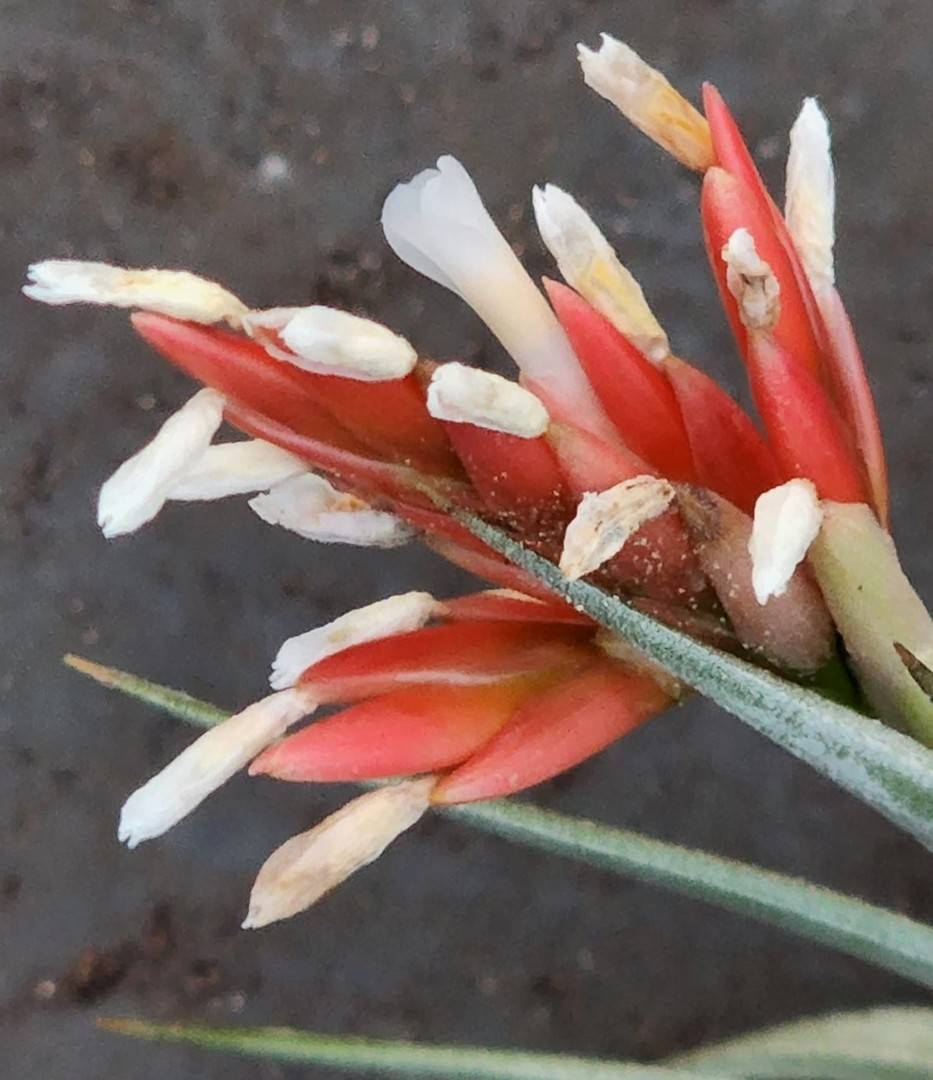
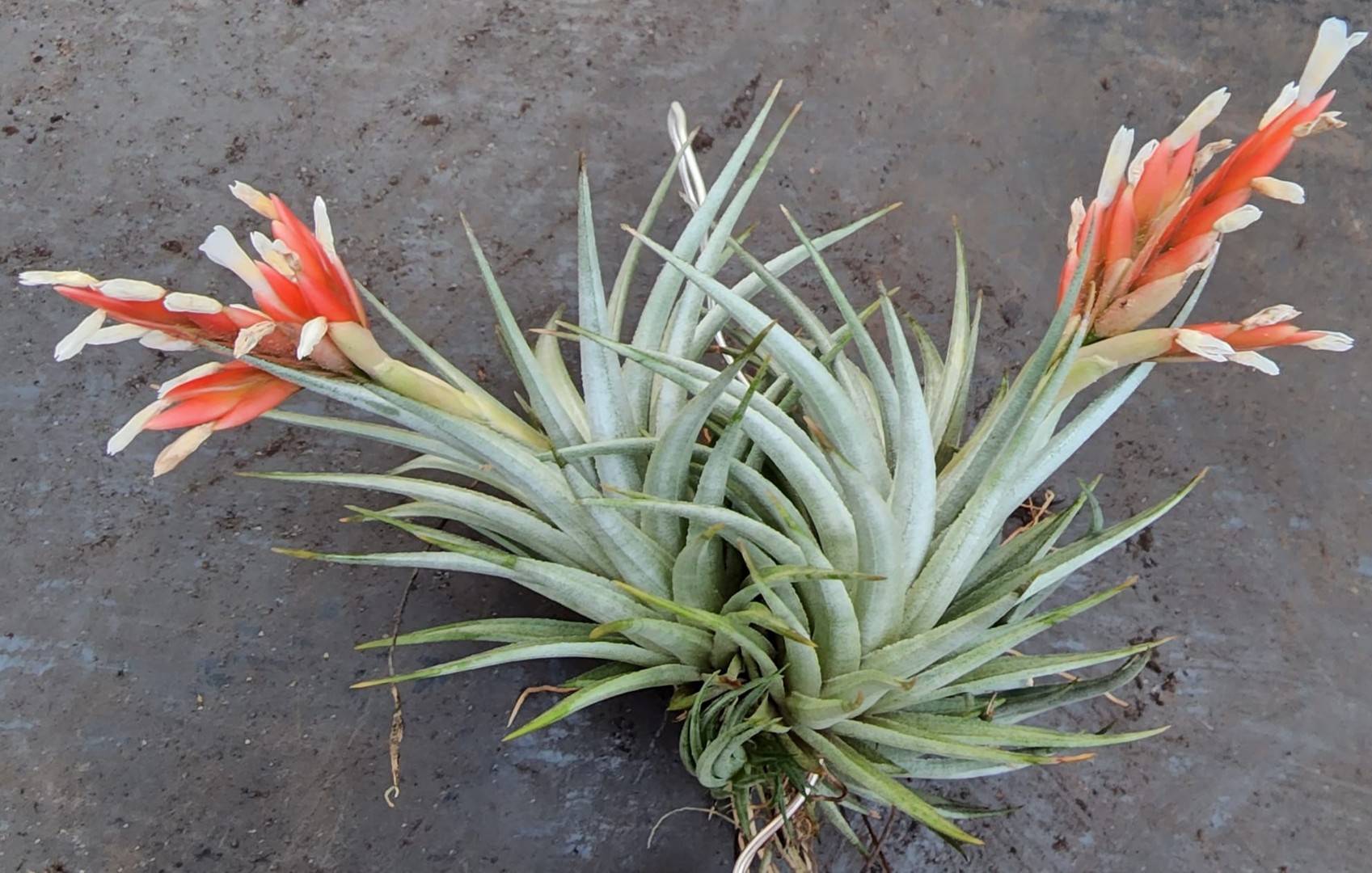
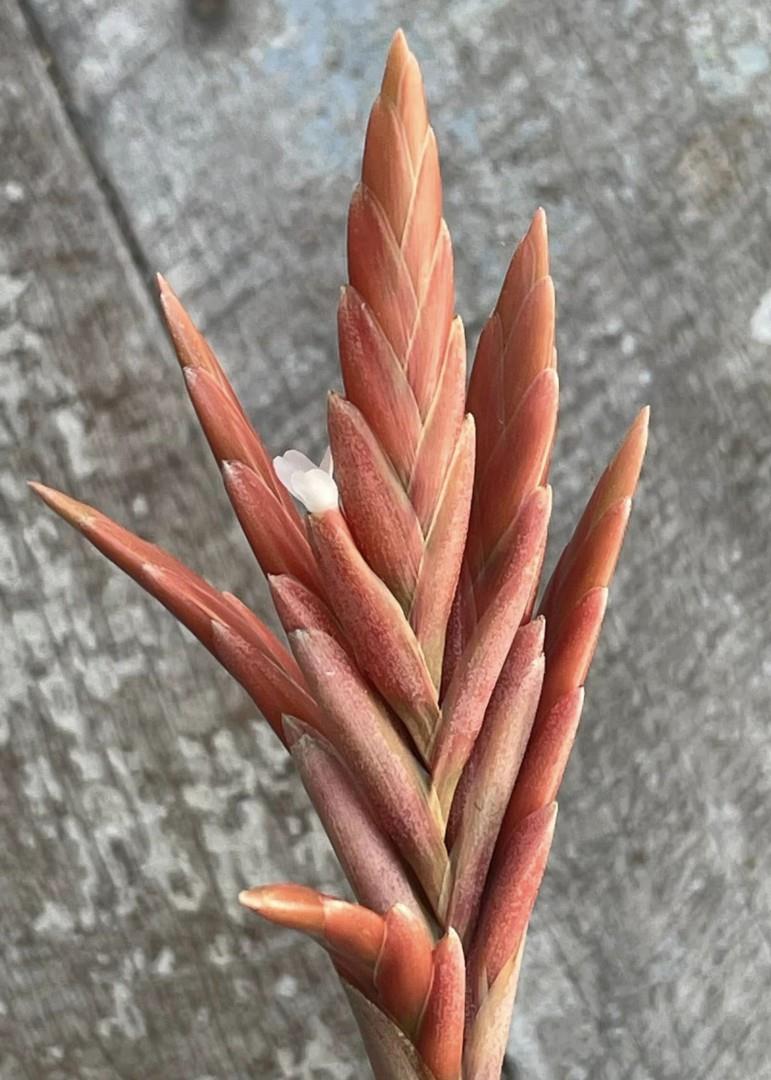
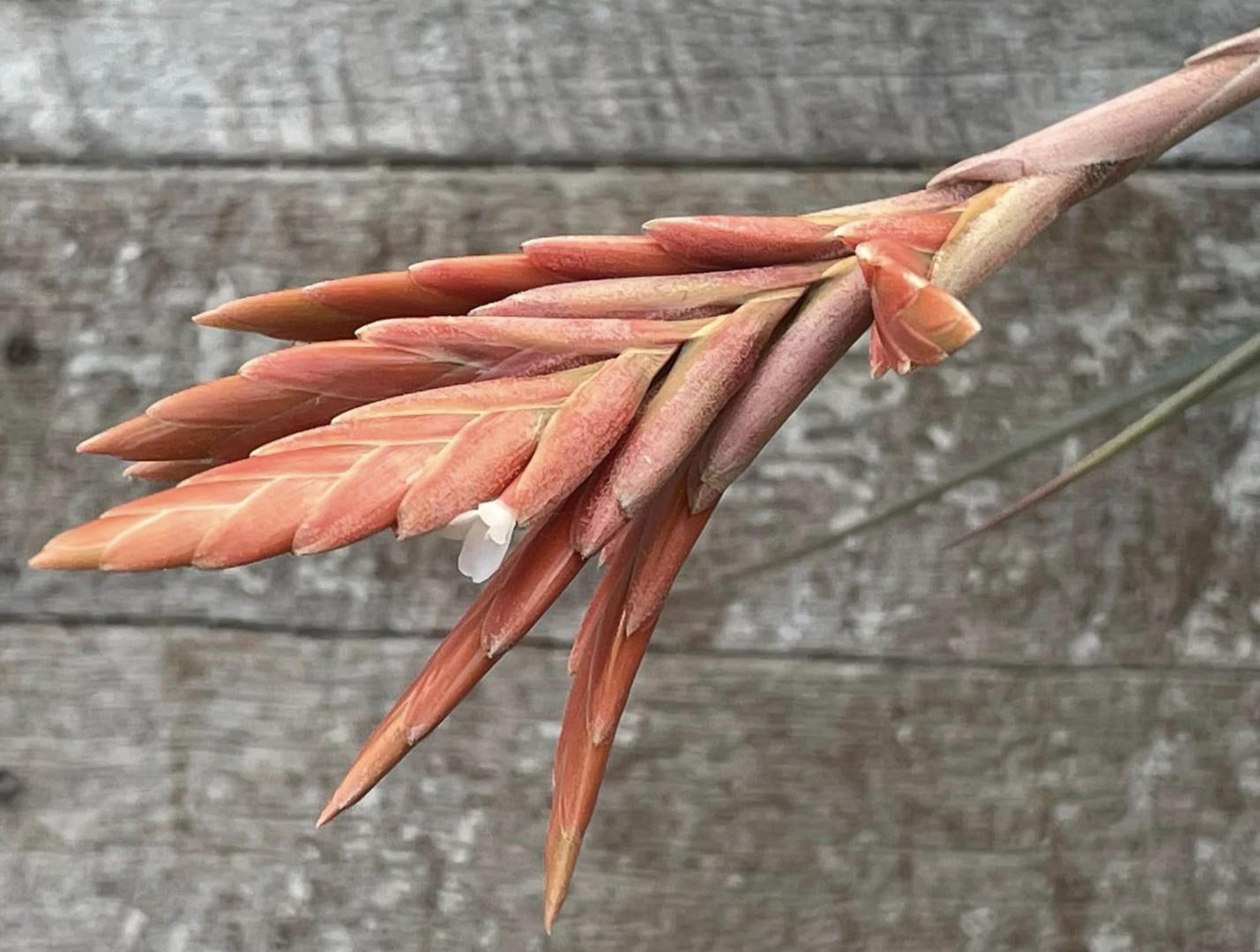
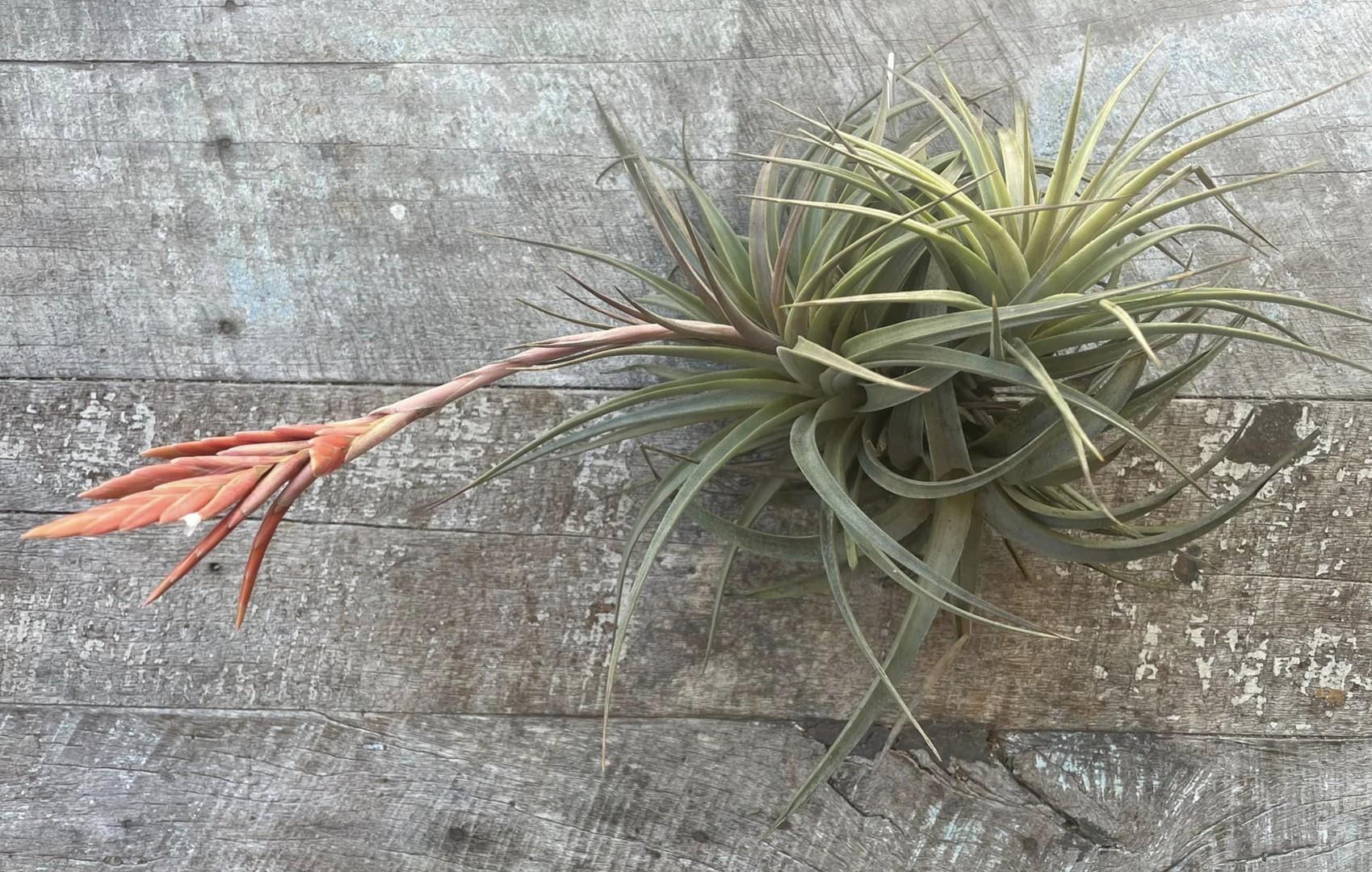
Derek Butcher 04/15. ... “The species has an interesting history. We know that vernicosa means varnished and can only assume this refers to the floral bracts but it is not mentioned by the botanists. They refer to smooth or slightly veined. T. vernicosa was named by Baker in 1887 closely followed by T. drepanophylla and T. polyphylla AND no mention of trichomes on the tips of the floral bracts. In 1935 Mez shows these as 1 species – T. vernicosa, and all of a sudden we see reference to trichomes on the tip of the floral bracts. Where did this detail come from? Is it present on all specimens. I have looked at the herbarium specimens and cannot see this feature. Lyman Smith accepted Mez's view.
It would seem we should follow Harry's philosophy that a plant does not have to have all the stated attributes to be accepted as that species.
From Baker 1889
The following species were recorded at 71, 75, and 85 respectively
Protologue
Tillandsia vernicosa Baker, Jour. Bot. London 25: 241.1887.
Leaves about 20 in a dense rosette, lanceolate-acuminate, 6-8- in. long, narrowed gradually from a scarcely dilated base ¾ in. diam. to the subulate apex, thick, rigidly
coriaceous, finely lepidote, pale green, smooth and shining on both surfaces. Peduncle under ½ foot long; bracts imbricated, only the lower with free points. Spikes about 4, forming a short panicle, dense, l-2 in. long, under 1/3 in. diam; flower-bracts ovate, ½ in. long. Calyx as long as the bract. Petal-blade white, oblong, ¼ in. long. Stamens not protruded beyond the tip of the petal.
Hab. Parana, Christie! Described from a living plant that flowered at Kew in October, 1861
Protologue
Tillandsia drepanophylla Baker, Handb. Bromel. 176. 1889. Type. Paraguay, Balansa 710 (P).
75. T. DREPANOPHYLLA Baker.-
Leaves densely rosulate, thick, rigid, linear, falcate, ½ ft. long, ½ in. broad low down, densely finely lepidote. Peduncle as long as the leaves. Spikes 3-4, crowded, distichous, dense, 2-3 in. long, ? in. diam. ; flower-bracts oblong lanceolate, ½ in. long. Calyx equalling or rather exceeding the flower-bract. Petal-blade oblong, white, ¼ in. long.
Hab. Paraguay, Balansa 710 !
Protologue
Tillandsia polyphylla Baker, Handb. Bromel. 178. 1889. Type. Sorata, San Pedro, Larecaja, La Paz, Bolivia, Mandon 1183 (P).
85. T. POLYPHYLLA Baker. –
Leaves very numerous, very rigid, linear-subulate from an ovate base 1 in. diam., a foot long, ? in. broad low down, densely adpresso-lepidote. Peduncle as long as the leaves; bract-leaves long-pointed. Panicle of 8-12 crowded dense distichous spikes 1-1½ in. long, ¼ in. diam.; flower-bracts oblong, acute, reddish, ½ in. long. Calyx shorter than the bract. Petal-blade small, oblong.
Hab. Bolivian Andes; Sorata, alt. 8000 ft., Mandon 1183 !
From Mez 1935
208. T. vernicosa Bak. in Journ. of Bot. XXV. (1887) 241.
T. drepanophylla Bak. Bromel. (1889) l76.
T. polyphylla Bak. Bromel. (1889) 178. –
Usque ad 0,3 m alta. Folia haud bulbose rosulata, usque ad 0,18 m longa, e basi nonnunquam 20 mm lata in apicem subulatum pungentemque persensim angustata, perrigida, profunde canaliculata, utrinque lepidibus parvis et quam maxime appressis pallidis obtecta. Scapus stricte erectus, foliis brevior vel ea subaequans, densissime imbricatimque vaginis rigidulis, late ellipticis, superioribus apice bene rotundatis, internodia .superantibus indutus. Inflorescentia pauci- vel subpauciflora, 2-pinnatim panniculata, digitatim e spicis 3-5 aequalibus composita, folia sueto paullo tantum superans, usque ad 70 mm longa; spicis dense flabellatis, bracteas primarias longe superantibus, usque ad 20-floris, stricte erectis, sessilibus, usque ad 0,1 m longis et 9 mm latis, anguste lanceolatis, acutis, satis complanatis; bracteis florigeris stricte erectis, dense imbricatis, coriaceo-rigidulis, dorso laevibus vel minute tantum prominulo-venosis, apicem versus lepidotis, rotundatis, haud carinatis, ad 10 mm longis, sepala subaequantibus. Flores erecti, ad 20mm longi; sepalis aequaliter liberis, rigidulis, glaberrimis laevissimisque, ellipticis, rotundatis, ad 11 mm longis. Petala sepalis
ad 8 mm longiora, alba, anguste elliptica, erecta, genitalia superantia.
Bolivia: Sierra de Velasco et de Sta. Cruz (O.Kuntze), am Sorata (Mandon n. 1183). Paraguay: Dept. Chaco, Loma Para (Rojas n. 2534), Cerro de Lambare (Balansa n. 710), ohne Standortsangaben (Christie, O. Kuntze, Morong n.554). Argentina: Prov. Salta, Tartagal (Hauman n. 1595), Metan (Castellanos n. 30/1927), Ledesma (Spegazzini in herb. Agr. Min. n. 14202), Oran (Ragonese n.3l/l733), Chaco Central, bei Formosa (Niederlein n. 29a), Colonia Benitez (Schulz n.3l/7741), Las Palmas (Jorgensen n.2004); vgl.Castellanos in Anal. Mus. Nac. Hist. Nat. XXXVI. (1931) 375.